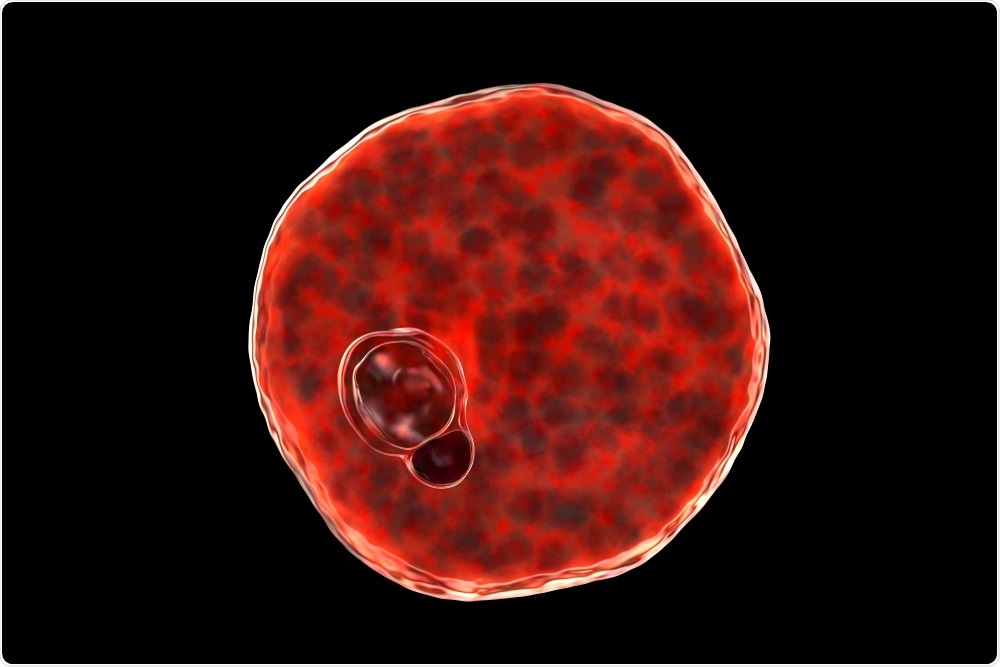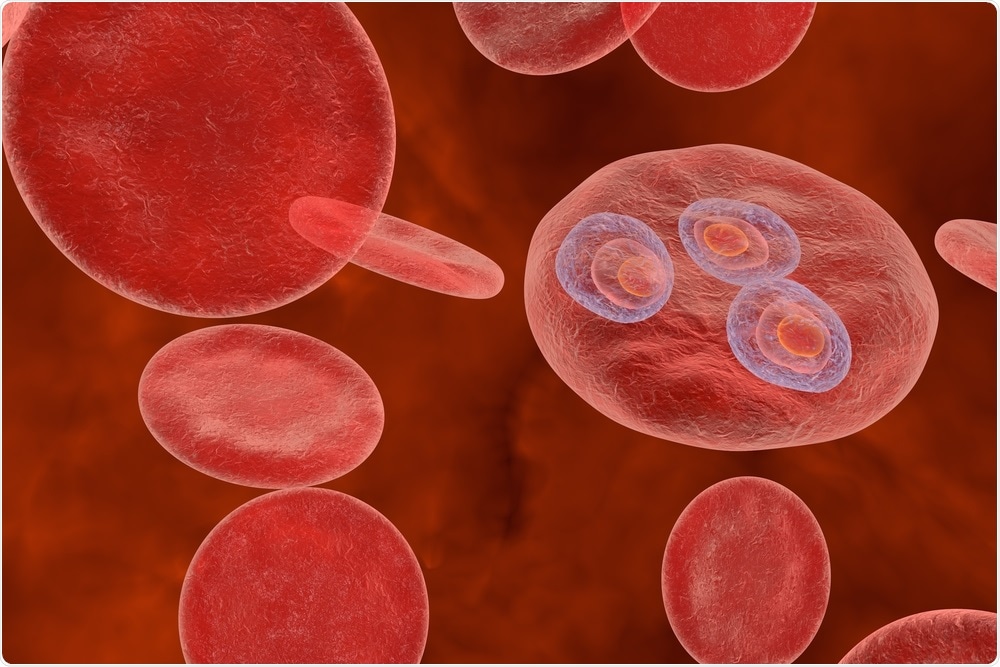It is often thought that roles in immune defense are confined to our white blood cells. However, the phagocytes, leukocytes, and macrophages, which circulate in our bloodstreams, are not the only cells playing defensive roles. What is often overlooked is the potential of red blood cells to defend from pathogenic invaders; notably the species of Plasmodium parasites that cause the blood-borne disease Malaria.

Cases of sickle cell anemia are concentrated in the African Malaria Belt, where malaria is endemic. This is because the condition offers protection from Malaria, owing to the physical alterations to red blood cell shape and structure.
The types and structures of the molecules coating cell surfaces, which protrude and interact with molecules on other cells, can also affect the ability of these parasites to invade your cells and therefore establish an infection.
The specific features of these molecules define your blood groups, the most famous of which would be the ABO± typing system used in blood transfusions. As research progresses, we see a greater correlation between changes in blood cell membrane proteins and carbohydrate structure, and vulnerability to Malaria. Furthermore, traits which are beneficial towards defense from Malaria remain relatively localized in Malaria stricken areas.
It is of no surprise that specialists are in heated contention over the dominant factor in blood-parasite evolution. Is the Malaria parasite shaping the way our cells are structured by asserting a selective pressure? Or are parasites reacting to spontaneous blood cell mutations leading to alterations in parasite behavior? The answer remains elusive.
Blood groups that offer protection against malaria
Many hypothesize that the O blood group acted as the progenitor for the other subgroups, which later branched out from this simple, and relatively clean slate. While O blood types are more likely to get bitten by mosquitos, they are much less likely to develop severe Malaria; a trait which stems from the simplicity of the red blood cell surface coat.
The antigen-lacking surfaces that characterize A and B blood groups hinders the ability of the Malaria parasite to recognize and bind to the red blood cell, and subsequently reduces the likelihood of it invading the cell – a process vital to parasite survival.
While there is contention over the evolution of the ABO blood groups, some evolutionary biologists hold that O blood types acted as the progenitor of the other subgroups. The predominance of it within Malaria-stricken areas may suggest an evolutionary component stemming from the pressure created by the parasite.
In addition to the protective action of the O blood group, the Dantu Hybrid Rearrangement stands out as another interesting alteration from what would be considered the “norm” for a red blood cell. As a trait mostly confined to Eastern African countries, it confers a 40% reduction in the risk of severe Malaria. It is interesting to consider why this trait is not more widespread.

Another point of contention is whether it has arisen recently and has not yet spread, or if a selective pressure has been placed on individuals in these countries by specific strains of the parasite. The answer to which may elucidate some ongoing debate on the role of Malaria as an evolutionary accelerator in red blood cell mutation and alteration.
Furthermore, the Duffy Antigen Receptor for Chemokines (DARC), when expressed on the surfaces of young or immature red cells, provides the key recognition point for a specific species of Malaria parasite (Plasmodium vivax).
However, almost exclusively in African and Middle Eastern countries populations exist which are devoid of this molecule. This one simple mutation was making these individuals effectively immune to P. vivax infections. This strongly correlates with the regions at high risk for Malaria on the surface of their red blood cells.
Shaping evolution
The existence of this blood group does perhaps suggest that the Plasmodium parasite is influencing the evolution of red blood cells and represents a key choice for natural selection. Rather than choosing the molecular scavenging role of the Duffy antigen instead, disease immunity appears to have been selected for.
Although the debate continues, it is irrefutable that there is a complex interplay between host and parasite development. This is undoubtedly impacting the structure of red blood cells over the course of progressive generations. It is interesting to consider the many factors which influence variations between human populations. As a species, we continue to evolve alongside other organisms which may be threats or competitors, but potentially spur our own development in a dynamic and complex interplay.
Sources:
- Mohandas, N. and An, X. (2012). Malaria and human red blood cells. Medical Microbiology and Immunology, 201(4), pp.593-598.
- WOOD, C., HARRISON, G., DORÉ, C. and WEINER, J. (1972). Selective Feeding of Anopheles gambiae according to ABO Blood Group Status. Nature, 239(5368), pp.165-165.
- Rowe, J., Opi, D. and Williams, T. (2009). Blood groups and malaria: fresh insights into pathogenesis and identification of targets for intervention. Current Opinion in Hematology, 16(6), pp.480-487.
- Farhud, D. and Zarif Yeganeh, M. (2019). A Brief History of Human Blood Groups. Iran Journal of Public Health, 42(1), pp.1-6.
- Leffler, E., et al. (2017). (2017). Resistance to malaria through structural variation of red blood cell invasion receptors. Science, 356(6343), p.eaam6393.
- Carvalho, G. and Carvalho, G. (2011). Duffy blood group system and the malaria adaptation process in humans. Revista Brasileira de Hematologia e Hemoterapia, 33(1), pp.55-64.
- Langhi, D. and Orlando Bordin, J. (2006). Duffy blood group and malaria. Hematology, 11(5-6), pp.389-398.
- Mercereau-Puijalon, O. and Ménard, D. (2010). Plasmodium vivax and the Duffy antigen: A paradigm revisited. Transfusion Clinique et Biologique, 17(3), pp.176-183.
Further Reading
- All Malaria Content
- What is Malaria?
- Malaria Causes
- Malaria Mechanism
- Malaria Diagnosis
Last Updated: Sep 9, 2019
.png)
Written by
Aro Nugawela
Aro is a life scientist, starting her master’s degree in biomedicine. Her research will focus on African sleeping sickness, at the level of parasite molecular biology.
Source: Read Full Article
